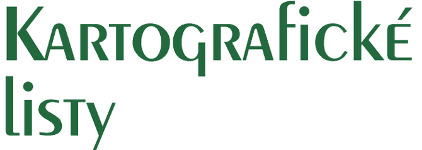Radovan NOSKO, Marcela MALIARIKOVÁ, Róbert FENCÍK, Ján SZOLGAY
Porovnanie metód zberu priestorových dát pre účely zamerania výmoľa v lokalite Turá Lúka
Nosko, R., Maliariková, M., Fencík, R., Szolgay, J.: Comparison of spatial data collection methods for purposes of the measurement of the gully in locality Tura Luka. Kartografické listy, 2018, 26 (2).
Abstract: Currently, the topic of the gully erosion pointing to the often resolved problem of soil degradation, which processes are accelerating in Europe. For this reason, these phenomena need to be explored to prevent further losses and restore soil functions to areas already affected. As a result of the gully erosion, a gully is produced. In practice, we use terms to define the gully; the permanent gully (necessary stabilization) and the ephemeral gully, which can be eliminated by plough every year. Measurement and quantification of impact of gully erosion is performed by various methods of spatial data collection. In the past, cross profiles measurements were used to determine the baseline parameters (volume, length, average depth, average width and slope). At present, we have different spatial data collection methods available to determine spatial landscape objects. Global navigation satellite systems (GNSS), unmanned aerial vehicles (UAV) and terrestrial laser scanning (TLS) are the most widely used. As part of the contribution, we focused on the permanent gully on an agricultural area in Myjava Hill Land in the cadastral district of Tura Luka. The area of Myjava Hill Land was significantly influenced by the Kopanitse colonization and the collectivization of agriculture, which contributed to the fact that it belongs among the most affected areas by gully erosion in Slovakia. The aim of the paper is to compare the spatial data collection methods for the purposes of measurement of the permanent gully in locality Tura Luka and to identify morphological changes of the gully, its evolution in time and to confirm the hypothesis of the negative impact of ephemeral gullies. The monitored permanent gully was measured by different spatial data collection methods. The measurements of spatial data were done in years 2014, 2015, 2016 and 2017. From the obtained data, we created a digital terrain model (DTM) and a model of the gully, which we further analyzed. In the analysis we compared the changes in the development of the gully based on the volume – as the one of the basic parameters. Finally, we compared the selected methods based on the volume, time consuming of spatial data collection and their processing.
Keywords: gully erosion, global navigation satellite system, unmanned aerial vehicle, terrestrial laser scanning

